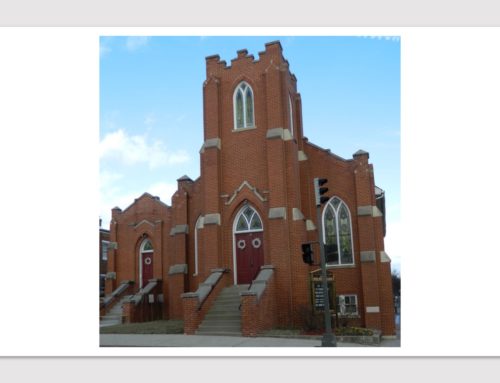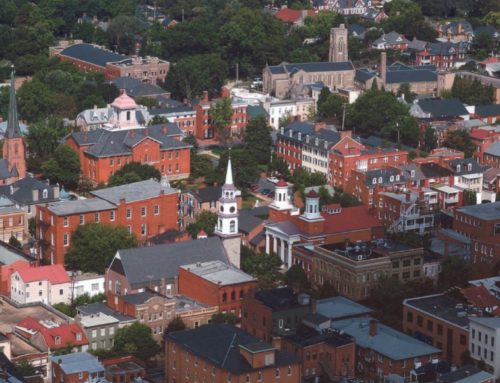Excerpt from the Frederick News-Post:
A proposal to protect the Monocacy Brewing Co. property with extra regulations related to historic preservation was rejected on Thursday, with Mayor Randy McClement casting the tie-breaking vote.
Frederick’s mayor and aldermen voted 3-2 to deny the historic preservation overlay recommended for 1781 N. Market St. The former Ebert’s Dairy building is owned by Phil Bowers and houses the manufacturing for his brewery, Monocacy Brewing Co.
An overlay is an extra level of regulation on top of zoning requirements already in place, giving the city’s Historic Preservation Commission authority to review and approve major exterior changes to the property. It does not affect the use of the property.
The building is historically significant for its ties to the dairy and ice cream industry in Frederick, as well as the people who owned it and in its architecture and design, according to a report by Christina Martinkosky, one of the city’s historic preservation planners.
Half vs. whole
The aldermen last month considered, but delayed a vote on, the recommended overlay amid questions about how to designate a portion of the site instead of the entire property. Discussion of partial property designations continued on Thursday, including a suggestion to put the overlay on just the facade of the building.
Bowers previously indicated support for a designation on the facade of the building, but expressed concern with how a property-wide overlay would affect plans to expand his brewing production business.
Jonathan Warner, speaking on behalf of Bowers, on Thursday also advocated for protecting just the facade. Warner owns Warner Commercial, a Frederick-based real estate consulting and brokerage firm that specializes in historic buildings and those in the Frederick Town Historic District.
“There’s nothing fancy about a warehouse building,” he said. “It’s an industrial building. There’s nothing beautiful about it.”
But Martinkosky maintained that the building’s historical significance included both the facade and the industrial warehouse space in the rear. She noted that in its peak operations as Ebert’s Dairy, the property housed the largest independent ice cream manufacturer in the country.
To include only half of the building in an overlay would be to lose “half of the significance and half of the story,” she said.
With an overlay on just the facade, the city’s Historic Preservation Commission could regulate major changes to or demolition of just that section of the property.
Elected officials weigh in
McClement voted for what he said was the first time since he was elected more than six years ago. His vote came after the motion to deny the overlay yielded a stalemate. The mayor typically does not vote, but can in the event of a tie among the aldermen.
Aldermen Josh Bokee and Michael O’Connor also voted to deny the designation, while alderwomen Kelly Russell and Donna Kuzemchak voted against the denial. Alderman Phil Dacey was absent from the meeting.
Bokee, who made the motion to deny the overlay, said he did not find that the property met the city’s criteria to make it eligible for designation.
Although O’Connor said there was “absolutely no question” of the property’s historical significance, he explained his support to deny the designation as a way to give more time to come up with a better solution. He said he did not think there was any danger of losing the historic value of the property without the designation and noted Bowers’ willingness to work with the city to find an alternative.
Exactly what that alternative will be remains uncertain. The aldermen questioned city legal staff about various ways to protect the property’s history with a less stringent version of an overlay, or one that did not encompass the entire property.
No workable alternatives exist under city policies currently, but several aldermen emphasized the need to come up with a workaround for this and other properties considered for individual historic designations.
The city has approved similar designations for nine other individual properties, based on a list of 26 sites identified as potentially eligible for historic designation under the city’s 2010 Comprehensive Plan. The remaining sites will be considered and potentially submitted for historic designations.



